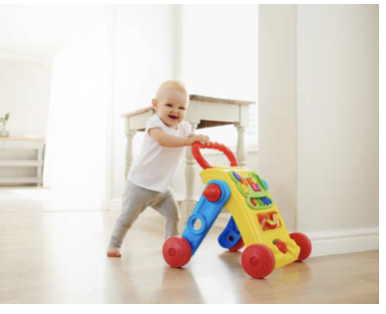Birds are wonderful pets, and providing them with a suitable cage is essential for their well-being. Choosing the right bird cage involves considering factors such as size, material, and design. In this ultimate guide, we will explore everything you need to know about selecting the perfect bird cage for your feathered friend.
Understanding Bird Cages: An Overview
Before diving into the details, let’s start with a brief overview of bird cages. A bird cage serves as a safe and comfortable sanctuary for your pet bird. It provides them with a space to rest, play, and exercise, mimicking their natural habitat. The right bird cage can significantly contribute to your bird’s overall happiness and health.
Imagine your bird happily perched on a swing, flapping its wings, and exploring its surroundings. A well-designed bird cage offers ample space for your feathered friend to move around freely. It allows them to stretch their wings and engage in natural behaviors like hopping, climbing, and playing with toys.
But why is it so important to choose the right bird cage? Well, just like humans, birds need a comfortable and secure home to thrive. A cage that is too small restricts movement and leads to stress and boredom. Imagine being confined to a tiny room with no space to move around; it would undoubtedly take a toll on your mental and physical well-being. The same goes for birds.
The Importance of Choosing the Right Bird Cage
The choice of a bird cage is crucial as it directly impacts your bird’s well-being. A cage that is too small restricts movement and leads to stress and boredom, while an unsuitable material can affect their health. By considering the right size, material, and design, you create an environment where your feathered friend can thrive.
When selecting a bird cage, size matters. Birds need enough space to spread their wings fully and move around comfortably. A general rule of thumb is to choose a cage that is at least twice the wingspan of your bird. This ensures that they have enough room to exercise and fly short distances within the cage.
Another important factor to consider is the material of the cage. Stainless steel and powder-coated cages are popular choices as they are durable, easy to clean, and non-toxic. Avoid cages made of materials like lead or zinc, as they can be harmful to your bird’s health.
The design of the cage is also worth considering. Look for cages with horizontal bars that allow your bird to climb and explore. Perches of different sizes and textures can provide exercise and help maintain healthy feet. Additionally, cages with removable trays and easy-access doors make cleaning and maintenance a breeze.
Different Types of Bird Cages: A Brief Introduction
When it comes to bird cages, there is a wide range of options available. Each type has its unique characteristics, suitable for different bird species and lifestyles. Some common types include dome-top cages, playtop cages, flight cages, and breeding cages. Understanding the different types allows you to make an informed decision for your bird’s specific needs.
Dome-top cages are popular for their elegant and spacious design. They provide ample vertical space for birds to climb and fly. The curved top not only adds aesthetic appeal but also allows for additional perching areas.
Playtop cages are perfect for birds that enjoy interacting with their owners. They feature an extended play area on top of the cage, complete with perches, ladders, and toys. This allows your bird to socialize and exercise outside of their main living space.
Flight cages, as the name suggests, are designed for birds that require more room to fly. They are typically larger in size and offer a horizontal space for birds to spread their wings and engage in short flights. Flight cages are ideal for active bird species that love to explore and exercise.
Breeding cages are specifically designed for bird breeders. These cages often come with dividers, allowing breeders to separate pairs or groups of birds. They provide a controlled environment for breeding activities and ensure the safety of both parents and chicks.
By understanding the different types of bird cages, you can choose the one that best suits your bird’s needs and preferences. Remember, a well-chosen cage is not just a home for your bird; it is a place where they can thrive, play, and feel secure.
Determining the Right Size for Your Bird Cage
Size matters when it comes to bird cages. Providing adequate space is essential for your bird’s physical and mental well-being. Consider these factors to determine the right size for your feathered friend.
Factors to Consider When Choosing Cage Size
When choosing the size of your bird cage, consider factors such as the bird’s size, flight pattern, and activity levels. Birds that require larger cages include macaws, cockatoos, and African greys. Smaller birds, like finches and canaries, thrive in smaller cages. Furthermore, take into account the number of birds you plan to house in the cage.
Common Mistakes in Selecting Bird Cage Size
One common mistake is purchasing a cage that is too small for the bird’s specific needs. Birds need ample space to stretch their wings and move around freely. Another mistake is overlooking the importance of providing vertical space. Birds enjoy climbing and perching at different levels, promoting exercise and mental stimulation. Avoid these mistakes to ensure your bird lives a happy and healthy life.
Exploring Bird Cage Materials: Pros and Cons
The material of a bird cage plays a significant role in your bird’s well-being. Understanding the pros and cons of different materials allows you to make an informed decision.
The Impact of Material on Bird Health
Some bird cage materials, such as stainless steel, are highly durable and resistant to rust. They are also safe and non-toxic for birds. On the other hand, certain materials, like galvanized steel, can be harmful if ingested by a bird. Considering the impact of material on bird health ensures that your pet remains safe and protected.
Comparing Common Bird Cage Materials
Commonly used bird cage materials include stainless steel, wrought iron, and powder-coated steel. Stainless steel is highly durable and easy to clean, making it a popular choice. Wrought iron offers strength and aesthetics, while powder-coated steel provides a range of colors to suit your style. Consider these options to find the material that best suits your bird’s needs and your personal preferences.
Bird Cage Design: Functionality and Aesthetics
When selecting a bird cage, it is important to balance functionality and aesthetics. A well-designed bird cage not only provides a comfortable living space for your bird but also adds beauty to your home.
Essential Features in Bird Cage Design
Look for essential features in a bird cage, such as secure locks, removable trays for easy cleaning, and well-designed doors for convenient access. The number and placement of perches and feeding stations should also be considered to accommodate your bird’s needs. Prioritizing functional elements ensures the cage is user-friendly for both you and your bird.
Balancing Practicality and Style in Bird Cage Design
Aesthetics play a significant role in selecting a bird cage that complements your home decor. Consider the style, color, and finish of the cage. With various options available in the market, you can find a design that suits your taste while ensuring the cage offers all the necessary functionalities.
Maintenance and Cleaning of Bird Cages
Regular maintenance and cleaning are essential to keep your bird’s cage in excellent condition. Follow these tips to ensure your bird’s living space remains clean and hygienic.
Routine Cleaning Tips for Bird Cages
Regularly remove food debris, feathers, and droppings from the cage. Clean and disinfect the cage using bird-safe cleaning products. Make sure to handle waste disposal carefully, as certain bird droppings contain harmful bacteria. Establishing a regular cleaning routine keeps the cage fresh and helps prevent the spread of diseases.
Ensuring Longevity of Your Bird Cage
Proper care and maintenance contribute to the longevity of your bird cage. Inspect the cage for any signs of wear and tear regularly. Replace damaged parts promptly to ensure the safety of your bird. Additionally, regularly lubricate door hinges and locks to keep them in optimal working condition. By taking care of your bird cage, you guarantee a safe and comfortable environment for your feathered friend.
In conclusion, choosing the right bird cage for your pet bird involves considering factors such as size, material, and design. Understanding the needs of your bird species and ensuring their comfort and safety is paramount. By following this ultimate guide, you can provide a suitable and inviting home for your beloved feathered friend.


